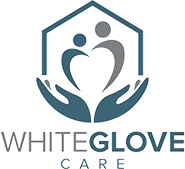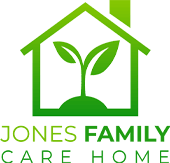Diaper Rash
Introduction
Diaper rash is type of dermatitis that occurs on your baby’s bottom and genitals. It is typically bright red and may include bumps such as blisters or pimples. Diaper rash may be irritating or mildly painful for your baby, but most cases respond well to over-the-counter ointments or creams and clear up within a few days. Diaper rash will not be a problem once your child is potty trained and no longer wears diapers or pull-ups.
Causes
Diaper rash is most common in babies between 4 and 15 months old. There are a number of causes of diaper rash:
- Wearing a wet or soiled diaper for too long
- Introduction of solid foods or new foods in the diet – as the content of stool changes, your baby is more prone to diaper rash
- More frequent bowel movements or diarrhea
- Diapers that are too tight
- Antibiotics taken by baby or mother while breastfeeding
- New products such as a different brand of disposable baby wipes or diapers, or certain chemicals in detergents, bleach or fabric softeners used to wash cloth diapers
- Bacterial, yeast or fungal infection (Candida)
Symptoms
- Bright red rash or scaly areas on the buttocks, scrotum and penis in boys, or labia and vagina in girls
- Bumps, pimples, blisters, ulcers, or pus-filled sores
Diagnosis
Diaper rashes are typically diagnosed by their appearance. If your child’s diaper rash is long-lasting or does not respond to over-the-counter treatment, your doctor may test for Candida.Treatment
Most diaper rashes respond to over-the-counter ointments and creams made specifically to treat diaper rash. Most of these contain Zinc oxide or petroleum jelly. Be sure to clean the affected area and let it dry before applying the cream. You should also change diapers frequently and keep the diaper area clean and dry. If your baby’s diaper rash is caused by a yeast infection, you can use an over-the-counter topical antifungal skin cream or ointment such as nystatin, miconazole, clotrimazole, or ketoconazole. If your baby’s diaper rash doesn’t clear up, your doctor may prescribe a stronger antifungal cream or a mild hydrocortisone cream.Prevention
The best way to prevent diaper rash is to change diapers frequently to keep your baby’s diaper area as clean and dry as possible. Other tips include:
- Try to avoid scented wipes or those that contain alcohol, as they tend to dry out or irritate the skin. Using water and a soft cloth is ideal.
- Gently pat the diaper area dry before putting a new diaper on your baby.
- Do not use corn starch, as it can make a yeast diaper rash worse.
- Do not use talcum powder; it can be dangerous if your baby breathes it in.
- Let your baby “air dry” or spend some time without a diaper on, if possible.
- Make sure diapers are not too tight or too small.
- Use a diaper rash ointment or petroleum jelly at each diaper change, even when your baby doesn’t have a diaper rash. It will act as a barrier against your baby’s skin.
- Do not use plastic or rubber pants over the diaper. They do not allow enough air to pass through.
- When washing cloth diapers, be sure to rinse them thoroughly to ensure there is no soap residue left behind. Also, do not use fabric softeners or dryer sheets, as they can irritate diaper rash.
Complications
A simple diaper rash may turn into a yeast infection. Diaper rash may occasionally become severe, with raw, open sores that may take a couple weeks to heal.
Copyright © - iHealthSpot Interactive - www.iHealthSpot.com
This information is intended for educational and informational purposes only. It should not be used in place of an individual consultation or examination or replace the advice of your health care professional and should not be relied upon to determine diagnosis or course of treatment.
The iHealthSpot patient education library was written collaboratively by the iHealthSpot editorial team which includes Senior Medical Authors Dr. Mary Car-Blanchard, OTD/OTR/L and Valerie K. Clark, and the following editorial advisors: Steve Meadows, MD, Ernie F. Soto, DDS, Ronald J. Glatzer, MD, Jonathan Rosenberg, MD, Christopher M. Nolte, MD, David Applebaum, MD, Jonathan M. Tarrash, MD, and Paula Soto, RN/BSN. This content complies with the HONcode standard for trustworthy health information. The library commenced development on September 1, 2005 with the latest update/addition on February 16, 2022. For information on iHealthSpot’s other services including medical website design, visit www.iHealthSpot.com.












